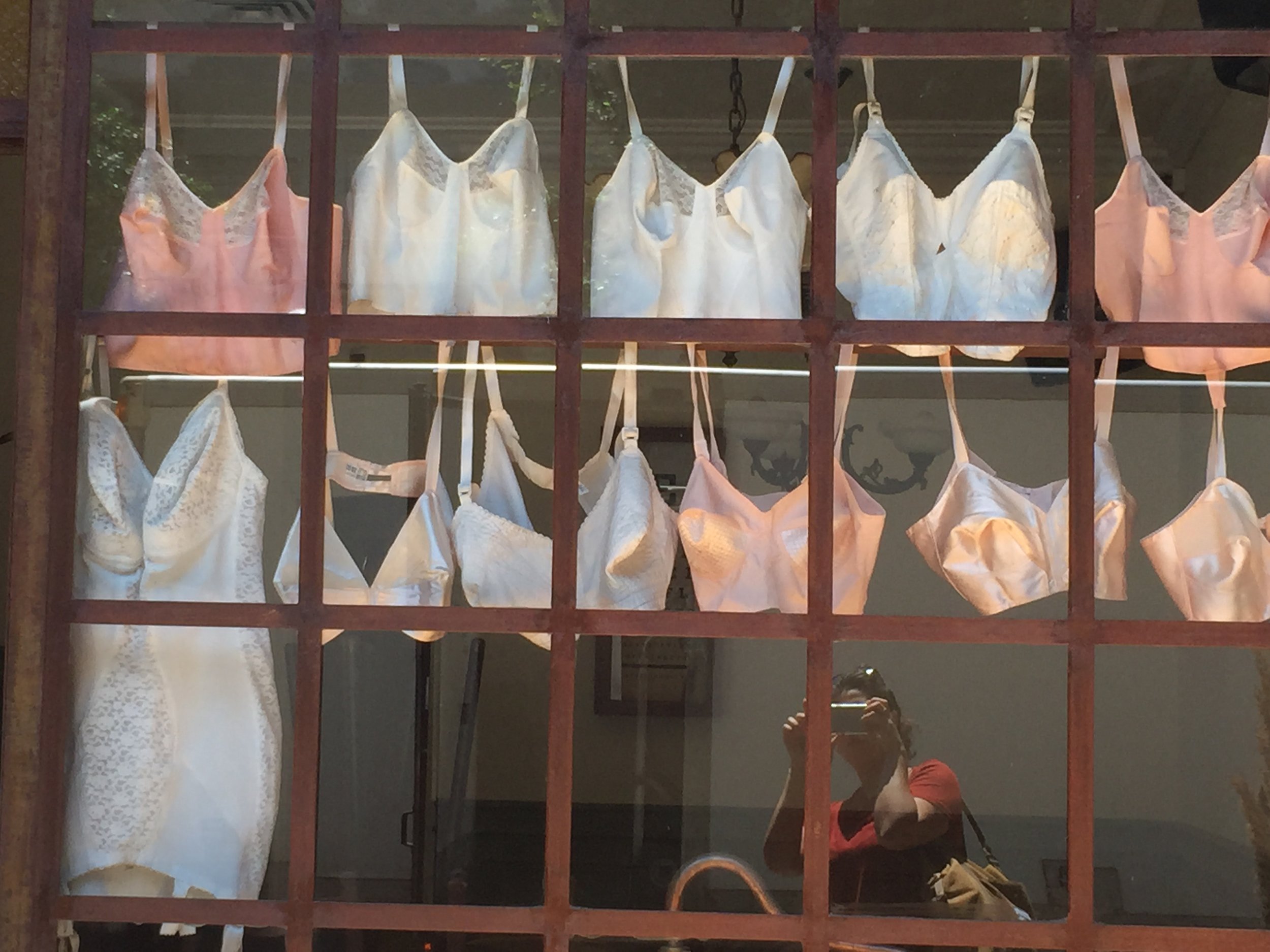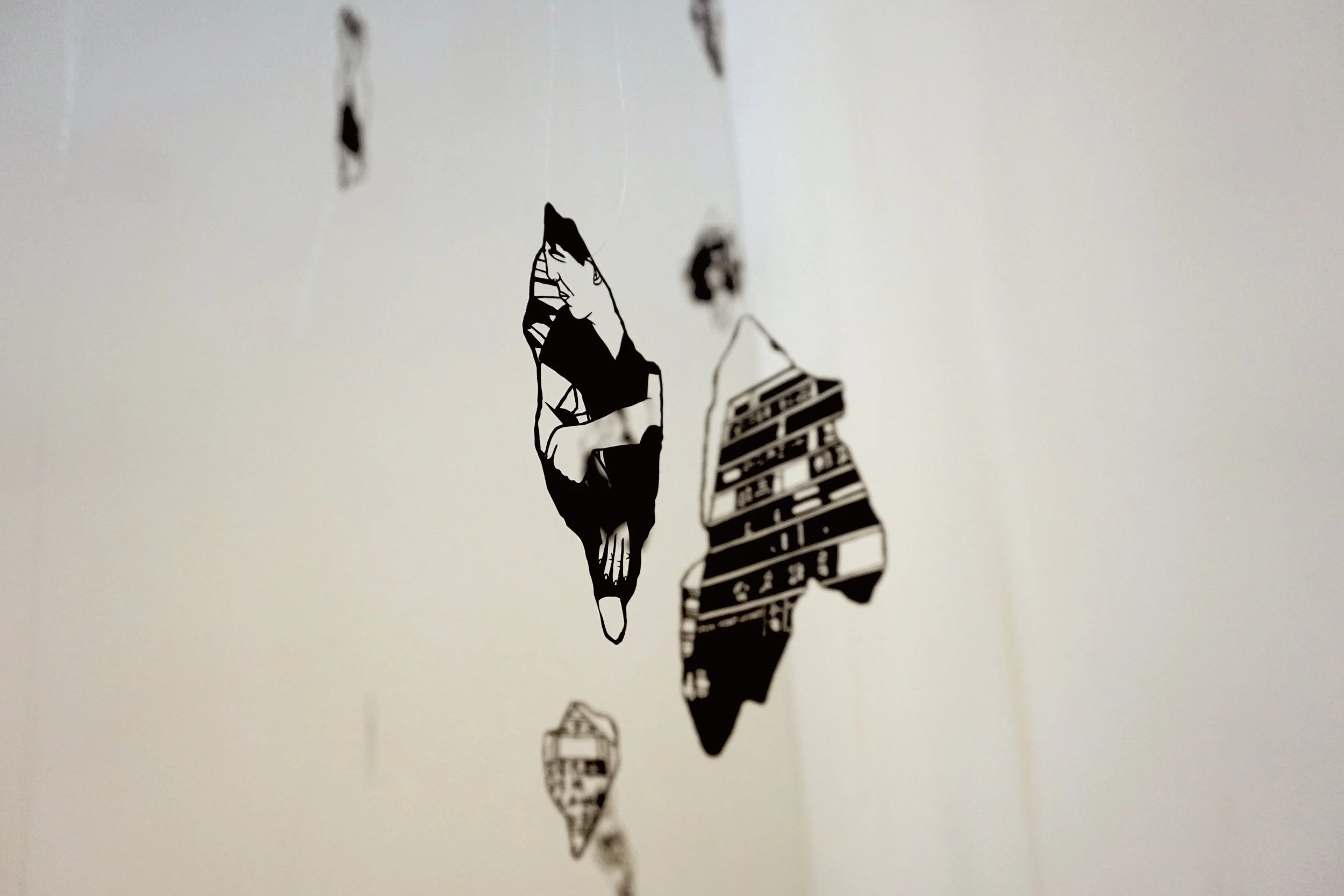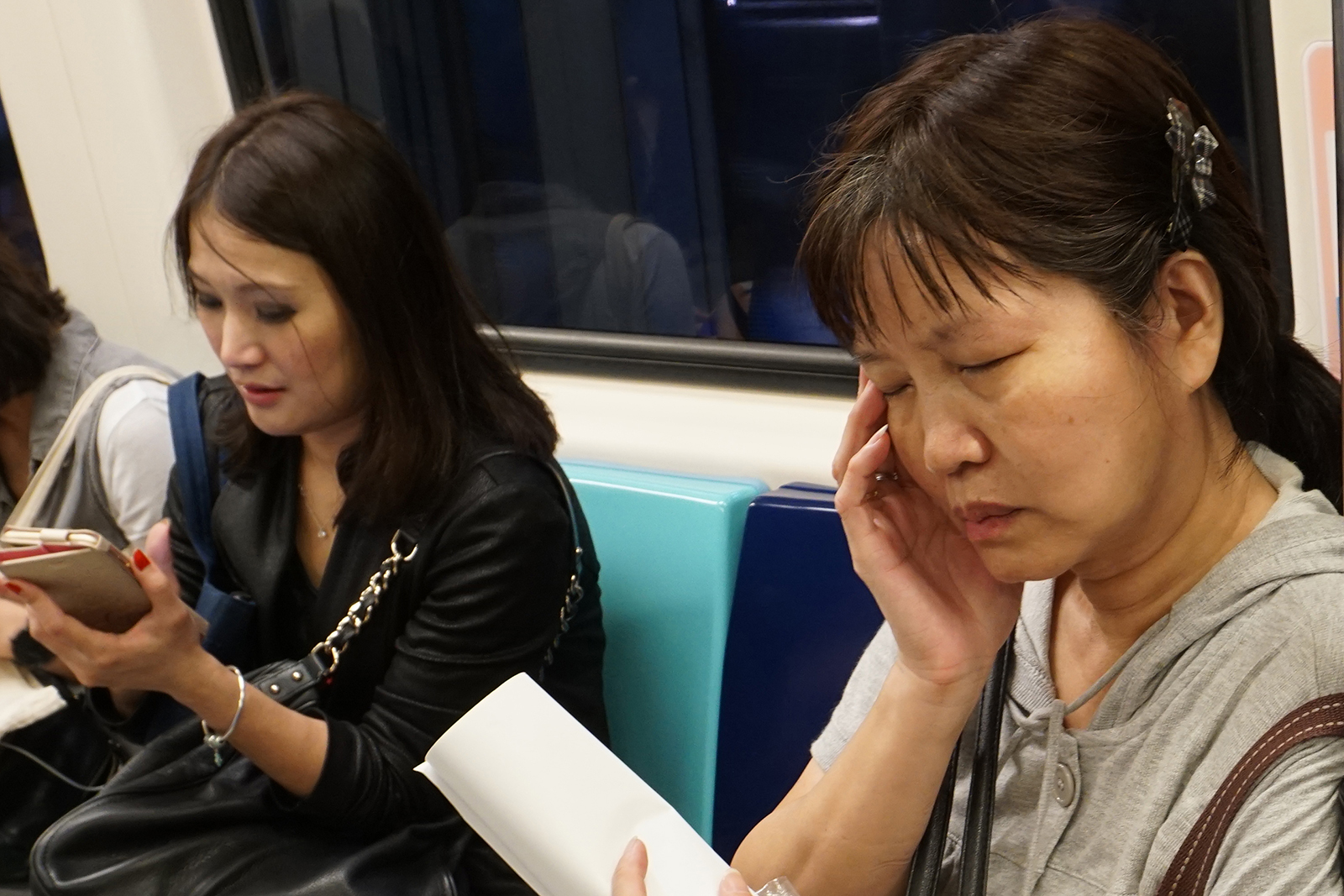Mountains of Narratives
Mountains of Narratives is a project I started in 2015, through which I explore the culture history of different places, alongside my personal history. During the development process, I accumulate information and references that are integrated into an ongoing series of mixed media paper-cuts.
As of today, I have been working on this project in Israel, Austria, Japan, Taiwan, Thailand, Germany, China and the US.
Below, is the history of the project’s body of work. Each ‘final’ piece has its own and evolutionary process; here the research, work process, and exhibitions of the work are being exposed.
FRACTURED WATER, 2017
Site Specific installation, threads, manual paper-cutting, black water vessel
3x2.6x2.6 m
Israeli Palestinian Pavillion Nakanojo Biennale, japan
The Way Stories Are Told, 2017
Site Specific installation, photography, paper-cut, wallpaper
2.7x4 m
Chongqing Changjiang Museum of Contemporary Art, Changjiang, China
After traveling with this project since 2015, I’ve decided to travel to Los Angeles and - unlike other destinations in the project - relocate there.As part of my relocation process, the only consistent figure I’ve encountered was a stranger, who sat daily at a street corner on the way to my studio. Over the course of six months, I photographed him every morning. Taking these photographs into my studio I challenged the question of the way we shape and tell stories of ‘others’ in various ways. Gradually, I began to understand that my observations on him were a metaphor for my feelings of longing to sense and a notion of home.
Fragmented Substance, 2017
Site Specific installation, manual paper-cutting, threads, framed black paper
4x3x3 m
Eretz Israel Museum, Tel-Aviv, Israel
Leaving Israel I was experiencing both a departure from the collective history of the place and my personal history.
The references to the destruction of "home" is mirrored in three aspects: war and conflict, loss of an actual home as part of an immigration process, and the loss of sense of personal belonging.
The more I traveled, the more fragmented my observations had become. Mixed and layered realities became cohesive fragments of my existence. These historical, political and personal places came together in ‘Fragmented Substance’ - in which I brought these realities together through an exploration of ‘home’ as an idea and as a structure.
The ideas of ‘home’ and ‘foreign’ compel one another; I believe that movement between both is a necessity to reobserve what is familiar to us from a different perspective. This installation is an attempt to enable the viewer to have the same experience, by disabling the ability to see the picture as a whole. Instead, the ‘reality’ is gathered by pieces collected as a viewer moves around the installation, seeing and patching-up fragments of visual information together as seen in the reflection of the fragments.
The tension rising from the installation is the conflict between my own desire to allow the layers and perspectives to culminate into a single narrative - and the inability, as an individual, to gather it all to an absolute and coherent reality.
Where Our Eyes Fall, 2016
Manual paper-cutting
174x408 cm
Processes of human construction and reconstruction don’t occur from personal choice. Disasters, wars political conflicts and changes shatter realities and places; in this falling apart there is also an opportunity for reconstruction and hope for something better.
This six-piece work exhibits six representations of this process that were drawn from places I visited: Israel-Palestine, Austria, Japan, Taiwan, Thailand, and Germany. Each part entails its own specific historical baggage and relations to one another.
This piece allows the viewer to see herself in the material and conceptual gap between construction and reconstruction.
No One Would Say It Out Loud, 2016
Manual paper-cutting
88x118 cm
This process follows the relationship between personal narratives and collective narratives, and the way in which an individual's story is collected and gradually disappears into a totality.
The starting point is a photograph of a person taken in 2015 in Taiwan of a person lying on the floor, faced down. This image followed me since to every destination to which I traveled - and in that sense, also became part of these places.
Eventually, the individual became just part of the landscape and dissolved in it.
Disasters, both natural disasters and manmade, generate a collective narrative so strong that is swallowed and conceal the importance of the single story. In the final stages of this piece, two landscapes are integrated: German forests and the ruins from Gaza, between these two all we are left with, is a memory of the single story of the man from the beginning.
The Homecoming, 2016
Manual paper-cutting
148x248 cm
Building’s rooftops act as caps, containing stories and histories of those who lived in them throughout different periods of time.
While an outside perspective does not reveal what actually takes place inside, most of the time it is the only perspective we have. Buildings are thus structures - similar to a given moment, or another person, to which we cannot access.
At some point, buildings - as containers - can no longer uphold all the stories, and they, in turn, seep out from cracks in the structure until eventually they meet the external reality, meet us.
In this piece, a building in Berlin acts as an intersection for stories from Austria, Gaza, and Israel, like rooms of the buildings of historical and ‘personal stories’ of the past.
Particles, 2015
Site-specific installation, manual paper-cutting, threads
Treasure Hill Artist Village, Taipei, Taiwan
In October 2015 I took part in a residency program in Taipei for a duration of three months.
Upon coming to a new place, to which I didn’t have any personal connection, I realized that the alienated disposition enabled me to observe Taipei from a semi-objective point of view.
In my first month there I photographed my impression and reaction to the place while studying the similarities and differences between Israel-Palestine, China, and Taiwan. The focus soon became the different approaches to issues of confrontation, resistance, objection, war, and destruction. Photographs which I took were hung in my studio in Taipei and allowed me to organize information and formulate my own narrative of what was, for me, a foreign place.
The fragments in the installation are based on photographs from the first month of duration, examining the control we have on the shaping of our own narrative of a place. From the beginning, I knew that the photographs that I will hang on the walls of my studio will further on evolve into the way I will remember the place and the memories of mine from the place.
Transitions, 2015
part of Solo exhibition
Open Contemporary Art Center, Taipei, Taiwan
In Taipei I photographed what I experienced; the pieces I created were not based on images placed next to one another but rather on an overlapping of images. By doing so I created one layered reality that represented my experience there on top and beneath with other places into one single narrative. This generated an observation of past experiences, that became a memory.
Around The Cracks, 2015
Solo exhibition
Site Specific Installation
Manual paper-cutting
Sommer Frische Knust, Bad Gastein, Austria
I’m looking at the crack in the wall, which is so far away from the place where I usually work in. This is the first stage of the project, a path towards a meeting place between collective memory and individual experience. Around the crack, our daily life happens. We all share the same struggle. Observing familiar objects from different perspectives occurs like memory -
revealing our version of the story. We remember selective parts and fragments of the picture, the same way we tell our story. The crack in the wall marks where the border between collectivity and individuality breaks.
The small images that are cut out in a part of the paper simulate the way our memory works. The paper stashed in the cracks stand for the spoken and the unspoken, the seen and the unseen, often covering the gap we need to fill. We try to hide our fragility stuffing the crack with memories we do not want to remember. But to no avail.




















































































































